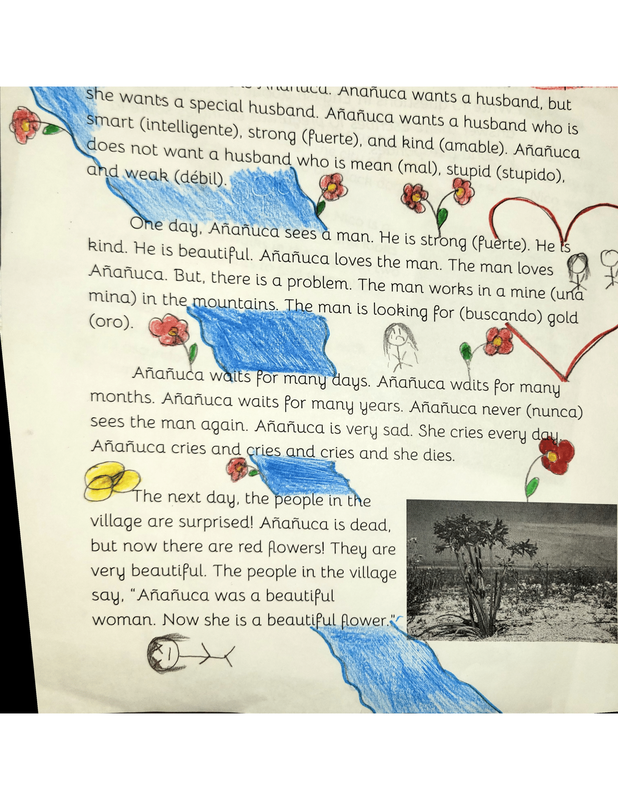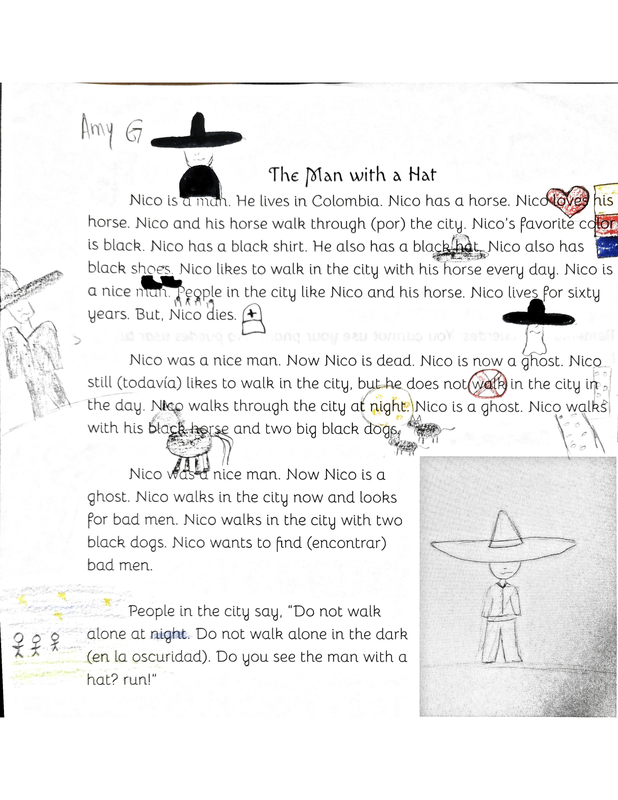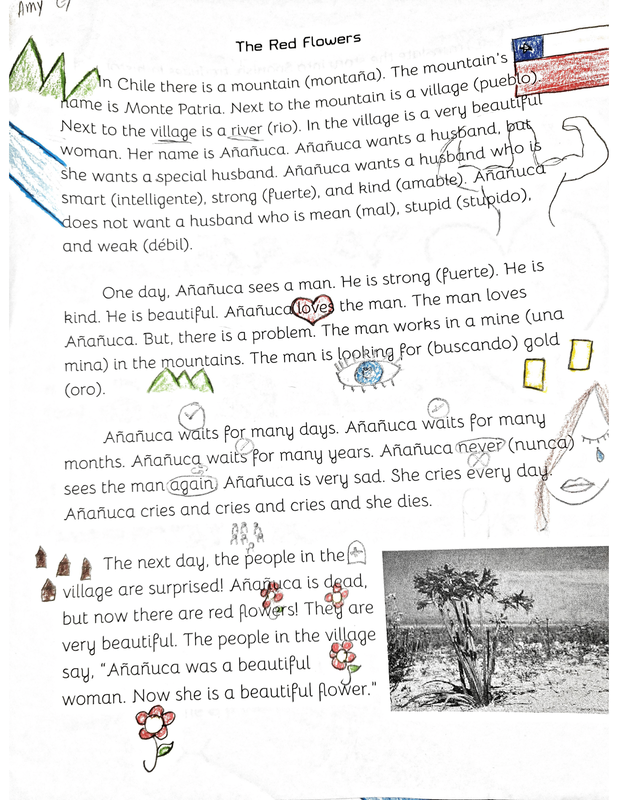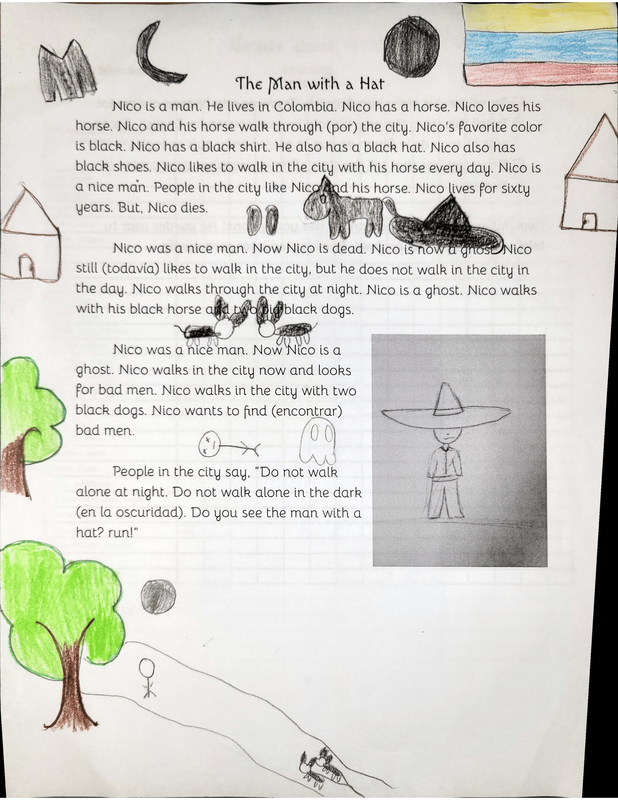Giving Credit Where It's DueI have to firstly give credit to two of my students. I am sharing their work with their permission and it is because of the initiative they took that I am sharing this idea. In my ESOL class this year (sometimes called ELL or ESL) we are preparing for our final exam this semester using urban legends from their home countries. I was pulled from class on this particular day and had to think quickly on what to give students. I ended up giving them the story I intended (a story I've called The Red Flowers based on a Chilean folktale) and the choice to translate the story, write and answer their own comprehension questions in English about the story, or to draw a picture for the story). Two students decided to illustrate the story in a unique way. They incorporated a variety of drawings including vocabulary definitions and storyline drawings and made use of the actual text of the story. I was so impressed with their work I wanted to share it widely. The next day I gave them a story I called "The Man with a hat" (based on a Colombian version of the tale of El Sombrerón) and similar instructions. I showed a student who was struggling with the instructions their work and he was inspired to try it himself. I encouraged him to talk to the two other students and they each created another wonderful work sample. So, I cannot take ANY credit for this idea :). This is entirely born out of two students' creativity. Thank you Amy, Lis, and Angel. Breakdown - The Red Flowers
What I really love about Lis's work is that she truly made excellent use of the space and the story. The village is described as being next to the mountain and the river. She's drawn the river through the story so that it flows with the text. The red flowers are sprinkled throughout. She's used the flag of Chile to represent the country, gold pieces, and included a heart that partially encompasses the paragraph where the couple fall in love. Image Credit: Found on Google Image Search (more info coming as I find it) Breakdown - The Man with a Hat
Something Amy did that I really appreciated was to include drawings of what vocabulary words meant right behind the text. She drew a heart for the word love, a large red X over "does not walk", and a lovely full moon for the word "night". Just like in the previous story, she made use of the Colombian flag. Something I observed in class was that she spoke to our Colombian students and asked them to clarify the colours of the flag. Something about this piece that works really well is that she shows Nico in every state of being. In the first paragraph, she has drawn him in completely black garb with his hat. In the second, she shows him walking on the street and as a ghost (complete with giant black hat). Lastly, she incorporates the warning at the end of the story to not walk alone at night. Image Credit: Miriam Patrick, 2022. Next StepsI am still working on how exactly to make this work as a whole class discussion with individual work. Ben Slavic has written in the past about Reading Option B or Read, discuss, and draw. I view this as an alternative to Reading Option B and I am calling it Illustrated Texts. You can read how I am going to instruct my Latin 1 and ESOL LDC 1 classes this week in this activity and I will make a follow up post about how it went and what changes I've made to the document after. In the mean time, enjoy more of my students' work :)
0 Comments
|
This PageIs dedicated to CI... But also... dedicated to what CI really is: meeting students where they are and helping them feel safe and make progress. I started this page after the efficacy and existence of research on CI was called into question and I want to make sure that there's a place where these things are easily accessible. ArchivesCategories |





 RSS Feed
RSS Feed